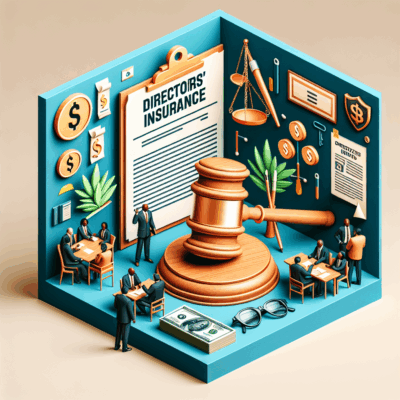Public Liability Insurance, Just Easier.
New Zealand company directors face unprecedented personal liability risks in today’s regulatory environment. From employment disputes and shareholder claims to regulatory investigations by the Commerce Commission or Financial Markets Authority, your personal assets and professional reputation are constantly at risk.
Our Public Liability Insurance provides complete protection against corporate & personal liability claims, ensuring you can lead with confidence while safeguarding your family’s financial future.
Get Your Unique Quote Today – Coverage from $100,000 to $50 Million For Less.
Trusted By Business Leaders Throughout New Zealand
We Offer The Following Insurers:






Trusted By Business Leaders Throughout New Zealand
Public Liability Insurance, Just Easier.
New Zealand company directors face unprecedented personal liability risks in today’s regulatory environment. From employment disputes and shareholder claims to regulatory investigations by the Commerce Commission or Financial Markets Authority, your personal assets and professional reputation are constantly at risk.
Our Public Liability Insurance provides complete protection against corporate & personal liability claims, ensuring you can lead with confidence while safeguarding your family’s financial future.
Get Your Unique Quote Today – Coverage from $100,000 to $50 Million For Less.
Get Liability Insurance Now
Understanding Public Liability Insurance in New Zealand
Public liability insurance stands as one of the most essential forms of business protection available to New Zealand enterprises, safeguarding businesses against the potentially devastating financial consequences of claims from third parties who suffer injury or property damage as a result of business operations. In New Zealand’s increasingly litigious business environment, where a single significant claim can bankrupt an unprepared business, public liability insurance provides the financial security and legal protection necessary to operate with confidence while protecting your personal assets, business reputation, and long-term viability from unexpected accidents and incidents that occur despite your best efforts to maintain safe operations.
The fundamental purpose of public liability insurance is to transfer the financial risk of third party claims away from your business to an insurance company that specializes in managing these exposures. When customers visit your premises, when you work at client locations, when members of the public interact with your business, or when your products reach consumers, countless opportunities exist for accidents, injuries, or property damage that could result in compensation claims, legal proceedings, and substantial financial losses. Public liability insurance responds to these situations by covering legal defense costs, investigation expenses, settlement negotiations, court awards, and compensation payments that result from covered incidents, ensuring that your business can survive claims that might otherwise force closure.
New Zealand’s legal framework creates particular considerations for public liability insurance that differ from other countries and make this coverage especially important for Kiwi businesses. While our ACC scheme provides comprehensive personal injury coverage that reduces the frequency of bodily injury claims compared to countries without similar systems, ACC doesn’t cover all injury types, property damage claims remain common, and the scheme doesn’t protect businesses against the legal costs and investigation expenses associated with defending against claims. Public liability insurance fills these critical gaps by covering injuries not covered by ACC, all property damage claims regardless of severity, legal defense costs even when claims are ultimately unsuccessful, and additional expenses associated with incident response and claim management.
The distinction between public liability insurance and other business insurance coverages represents an important concept that business owners must understand to ensure comprehensive protection. Public liability specifically addresses third party claims arising from business operations, meaning claims from customers, clients, visitors, suppliers, or other external parties who suffer harm allegedly caused by your business. This coverage differs from employers liability insurance that protects against employee injury claims not covered by ACC, professional indemnity insurance that covers claims arising from professional advice or services, and property insurance that protects your own business assets rather than third party property. Most businesses require multiple insurance coverages working together to address their complete risk profile comprehensively.
Public liability claims can arise from an extraordinarily broad range of scenarios reflecting the diverse ways businesses interact with third parties and the countless opportunities for accidents and incidents that occur despite reasonable precautions. A customer might slip on a wet floor in your retail premises, a tradesperson might accidentally damage plumbing while working at a client’s property, a product you sell might malfunction and cause fire damage to a customer’s home, a sign from your business might fall and injure a pedestrian, or a visitor to your premises might trip over equipment and suffer injuries requiring medical treatment and ongoing care. Each scenario represents a potential public liability claim where the affected party seeks compensation for their losses, and without appropriate insurance coverage, your business would bear the full financial burden of defense costs, settlements, and compensation awards.
The severity and frequency of public liability claims in New Zealand has increased over recent decades as society has become more aware of legal rights, more willing to pursue compensation for perceived wrongs, and better served by legal professionals willing to take cases on contingency arrangements that make litigation accessible even to claimants with limited financial resources. Courts have also demonstrated increasing willingness to award substantial damages in cases involving serious injuries, permanent disabilities, or significant property losses, with some public liability claims resulting in compensation awards exceeding one million dollars. These trends make adequate public liability insurance limits essential, as businesses that underinsure may find themselves personally liable for damages exceeding their policy limits.
Understanding the claims-made versus occurrence basis of public liability insurance affects how coverage operates and how businesses should manage policy renewals and changes. Most public liability policies in New Zealand operate on an occurrence basis, meaning they cover incidents that occur during the policy period regardless of when claims are formally made. This structure provides important protection because public liability claims often arise months or even years after the incident that caused injury or damage, as injured parties may not immediately realize the extent of their injuries or property damage may take time to become apparent. Occurrence-based coverage ensures that businesses remain protected for past operations even after changing insurers or ceasing operations, provided they maintained coverage at the time incidents occurred.

What Public Liability Insurance Covers
Public liability insurance provides comprehensive financial protection against the costs associated with third party claims alleging that your business operations caused bodily injury or property damage, with coverage typically extending across multiple categories of expenses and losses that can accumulate rapidly when incidents occur. Understanding exactly what your public liability policy covers helps ensure you have appropriate protection while avoiding assumptions about coverage that might leave you exposed to unexpected costs when claims arise.
Legal defense costs represent one of the most valuable components of public liability coverage because defending against liability claims typically involves substantial professional fees regardless of whether claims have merit or ultimately succeed. When someone alleges that your business caused them harm, you need experienced legal representation to investigate the incident, gather evidence, interview witnesses, engage expert witnesses, negotiate with claimants and their lawyers, and if necessary defend your interests in court proceedings that can extend over months or years. Legal costs in public liability matters typically range from tens of thousands to hundreds of thousands of dollars depending on claim complexity, the parties involved, the evidence required, and whether matters proceed to trial. Your public liability insurance covers these defense costs in addition to policy limits rather than eroding your coverage limit, ensuring you have adequate resources both to defend claims and to pay settlements or awards.
Compensation payments to injured third parties form the primary coverage component of public liability insurance, addressing the damages that businesses become legally liable to pay when they cause injury or property damage through negligent acts or omissions. Compensation can include medical expenses not covered by ACC for injuries outside the scheme’s scope, ongoing care costs for serious injuries requiring continuing treatment, loss of earnings when injuries prevent people from working, pain and suffering damages recognizing the physical and emotional impact of injuries, property repair or replacement costs for damaged belongings, consequential losses flowing from the primary damage, and legal costs incurred by successful claimants in pursuing their claims. Public liability policies typically provide coverage limits ranging from one million to twenty million dollars, with businesses selecting limits based on their risk profile, client requirements, and the potential severity of claims they might face.
Property damage coverage addresses situations where your business operations, products, or employees damage third party property, ranging from minor incidents like scratching a client’s floor during service delivery to catastrophic scenarios like fire damage to neighboring properties caused by your business operations. Property damage claims can involve direct repair or replacement costs for damaged items, loss of use damages when damaged property cannot be used pending repairs, diminution in value for property that cannot be fully restored to pre-incident condition, and consequential losses suffered by property owners due to the damage. The breadth of property damage coverage makes public liability insurance essential for virtually all New Zealand businesses because property damage claims can arise in countless ways and result in substantial financial liability regardless of business size or industry.
Product liability coverage, typically included within public liability policies or available as an extension, protects businesses that manufacture, distribute, import, or sell products against claims alleging that defective or dangerous products caused injury or property damage to consumers or end users. Product liability claims can arise from design defects making products inherently unsafe, manufacturing defects affecting particular production runs, inadequate warnings or instructions failing to alert users to risks, or products that fail to meet consumer expectations for safety. Product liability coverage extends beyond the immediate injury or damage to include product recall costs, investigation expenses to determine the cause and extent of defects, legal defense against regulatory action, and consequential losses suffered by injured parties. Businesses involved in product supply chains should carefully evaluate their product liability exposures and ensure adequate coverage limits recognizing that product claims can affect multiple parties and result in substantial damages.
Public relations and crisis management expenses represent an increasingly important coverage component as businesses recognize that public liability incidents can quickly become reputational crises requiring professional communications support. Modern public liability policies often include coverage for public relations consultants, crisis management specialists, and communications professionals who help businesses respond to incidents, manage media inquiries, protect brand reputation, and maintain customer confidence during difficult situations. This coverage recognizes that the reputational damage from public liability incidents can exceed the direct financial costs, particularly for businesses dependent on public trust and confidence.
Emergency response costs and incident mitigation expenses provide coverage for immediate actions necessary to prevent further injury or damage following incidents, recognizing that businesses have both legal and ethical obligations to respond promptly when their operations cause harm. Coverage typically includes costs of emergency services, temporary repairs to prevent further damage, security arrangements protecting incident scenes, environmental clean-up when business operations cause contamination, and expert consultants assisting with incident assessment and mitigation. These costs can accumulate rapidly following serious incidents, making insurance coverage for emergency response valuable protection even before formal claims are made.
Supplementary payments beyond policy limits often include coverage for costs incurred with insurer consent such as loss of earnings when business principals must attend court proceedings, costs of bail bonds for criminal proceedings arising from incidents, interest accruing on judgments pending appeal, and costs of appeal bonds. These supplementary payments provide important additional protection ensuring that businesses don’t face unexpected costs beyond their policy limits for expenses necessarily incurred in managing claims and defending their interests.

Ready to discuss Public Liability Insurance?
The decision to purchase public liability insurance is ultimately a business decision that requires directors to weigh the costs of coverage against the potential consequences of being uninsured. For most New Zealand directors, this analysis clearly favours comprehensive coverage because the relatively modest cost of insurance premiums pales in comparison to the potential financial, professional, and personal consequences of facing a significant liability claim without proper protection. Talk to the experts and decide for yourself.
Compare Us vs. Direct Insurers
Compare for yourself and see why more and more NZ business owners are receiving expert insurance advice.
-
Buying From DirectorsInsurance.co.nz
We are New Zealands directors and officers insurance experts which is why we launched to show the benefits in expertise and advice whilst saving you time & money.
-
100% Impartial Service
-
Dedicated Directors Insurance Expertise
-
Matching Policies Specific To Your Requirements
-
NZ Owned & Operated
-
Full 9am-6pm Phone Support
-
Full Email Support
-
-
Mainstream Insurers
Direct policy providers and insurers who have generic insurance policies covering wider business insurance
-
Standard Policy Cover
-
Lacking Expertise
-
Limited Support
-
Offshore Claims Handling
-
Biased Selling Approach
-
Why You Should Consider Public Liability Insurance
Common Public Liability Claim Scenarios
Slip, trip, and fall incidents represent the most frequent category of public liability claims in New Zealand, occurring when customers, visitors, or members of the public suffer injuries from falls on business premises due to hazards such as wet floors, uneven surfaces, poor lighting, obstacles in walkways, or inadequate maintenance. These claims are particularly common in retail businesses, hospitality venues, offices with public access, and any premises where members of the public regularly visit. A customer might slip on a wet floor in a supermarket, trip over a raised threshold entering a shop, fall on stairs with inadequate handrails, or stumble in a poorly lit car park. While many slip and fall incidents result in minor injuries, serious cases can involve broken bones, head injuries, or back damage requiring extensive medical treatment and resulting in substantial compensation claims.
The key to defending slip and fall claims typically involves demonstrating that the business maintained reasonable safety standards, regularly inspected premises for hazards, promptly addressed known issues, provided adequate warnings of unavoidable hazards, and took appropriate precautions given the nature of the premises and expected visitor numbers. Public liability insurance covers both the costs of defending these claims and any compensation ultimately awarded, but businesses can reduce claim frequency and severity by implementing systematic hazard identification procedures, maintaining detailed inspection logs, promptly addressing identified hazards, providing clear warning signage, ensuring adequate lighting, and training staff to identify and respond to potential hazards.
Property damage during service delivery represents another significant category of public liability claims, particularly affecting trades and service businesses that work at client premises where opportunities for accidental damage abound. Electricians might drill through water pipes or damage walls while installing wiring, plumbers might cause water damage from burst pipes or flooding, painters might spill paint on expensive flooring or furnishings, furniture movers might damage walls or break valuable items, and landscapers might damage underground services or neighboring property. Even careful tradespeople operating to professional standards sometimes cause accidental damage, making public liability insurance essential protection for businesses working at client locations.
The financial consequences of property damage claims can be substantial because damaged items may have high replacement or repair costs, consequential losses such as accommodation costs while homes are uninhabitable, loss of use damages for property that cannot be used pending repairs, and in serious cases diminution in value for property that cannot be fully restored. A plumber who causes flooding might face claims not just for water damage repairs but also for damaged contents, alternative accommodation costs, loss of rental income if the property cannot be tenanted, and reduced property value if water damage creates ongoing problems. Public liability insurance with adequate limits ensures that these claims don’t bankrupt businesses or force owners to liquidate personal assets to satisfy compensation awards.
Injuries from business equipment or products occur when items sold, supplied, or used by businesses malfunction or fail, causing injury or property damage to customers or third parties. A defective electrical appliance might cause fire damage to a customer’s home, a failed ladder sold by a hardware store might collapse causing serious injury, a faulty heating system installed by a contractor might leak carbon monoxide, or defective machinery might injure operators. Product liability claims can be particularly complex because they may involve multiple parties in supply chains, require extensive technical investigation to determine fault, affect numerous customers if defects are widespread, and result in product recalls with substantial associated costs.
Defending product liability claims typically requires demonstrating that products met appropriate safety standards, were properly manufactured or maintained, included adequate warnings and instructions, and were used in ways they were designed for. However, businesses can be found liable even when they exercised reasonable care if products prove to be defective or dangerous, making adequate product liability coverage essential for manufacturers, importers, distributors, and retailers. Coverage limits should reflect potential claim costs including not just individual injury or damage claims but also potential recalls, investigations, and multiple claims if product defects affect numerous customers.
Completed work failures represent public liability claims arising after tradespeople or contractors complete projects, alleging that defective or negligent work caused injury or damage. A builder might face claims years after completing construction if design or workmanship defects result in structural failures, an electrician might be liable if faulty wiring causes fires months after installation, or a plumber might face claims if poorly installed pipes burst causing water damage. Completed operations coverage within public liability policies protects against these claims arising after work is finished, recognizing that many defects only become apparent with time and businesses need ongoing protection for past work.
The time delay between completing work and claims arising creates particular challenges because businesses may have changed insurers, increased or decreased coverage limits, or even ceased operations by the time claims are made. Occurrence-based public liability coverage provides important protection by covering incidents during the policy period regardless of when claims arise, ensuring that businesses remain protected for past work. Businesses should carefully consider completed operations exposures when selecting coverage limits, recognizing that serious claims can arise years after work is completed and result in substantial financial liability.
Third party injuries at business events or premises occur when businesses host events, maintain premises accessible to the public, or create situations where members of the public might be injured. A café might face claims if customers are burned by hot beverages, a gym might be liable for injuries from defective equipment, an event organizer might face claims if attendees are injured at venues, or a business might be liable if members of the public are injured by falling signs or debris from business premises. These claims reflect the broad scope of public liability coverage extending beyond direct customer interactions to encompass any situation where business operations might cause third party harm.
Defending these claims requires demonstrating reasonable safety measures, appropriate risk assessments, adequate supervision and security where necessary, proper equipment maintenance, clear warnings of known hazards, and reasonable responses when incidents occur. However, businesses can be found liable despite reasonable precautions if injuries result from their operations, making adequate public liability insurance essential protection against these varied and unpredictable risks.

Industries and Businesses Requiring Public Liability Coverage
Trades and construction businesses face particularly high public liability exposures due to the nature of their work involving power tools, heavy equipment, structural modifications, and operations at client premises where opportunities for accidents and property damage are abundant. Electricians, plumbers, builders, carpenters, painters, roofers, landscapers, and other trades professionals typically require public liability coverage with minimum limits of two million dollars, though many situations warrant five million or higher coverage given potential claim severity. Construction businesses working on large projects, operating heavy machinery, or employing numerous tradespeople often require ten to twenty million dollar limits to satisfy client contracts and adequately protect against worst-case scenarios involving serious injuries, multiple parties, or extensive property damage.
The specific public liability exposures facing trades businesses include property damage from tools and equipment, injuries from dropped items or equipment malfunctions, fire damage from hot works or electrical faults, water damage from plumbing errors, structural damage from modifications or renovations, damage to underground services, injuries to occupants or visitors at work sites, and environmental damage from materials or processes. Many construction projects require contractors to maintain specified public liability limits as contract conditions, making adequate coverage not just risk management but a business necessity for securing work. Trades businesses should ensure their public liability coverage includes adequate tools and equipment coverage, completed operations protection for work done, and coverage for subcontractor activities when they engage other trades.
Retail businesses operate with constant public interaction creating ongoing public liability exposures from customers visiting premises, handling products, using facilities, and engaging with staff. Retailers require public liability coverage addressing slip, trip, and fall incidents in stores, injuries from falling stock or displays, property damage from shopping trolleys, product liability for goods sold, and various other scenarios arising from public access to retail premises. Coverage limits typically range from one to five million dollars depending on store size, customer numbers, product lines, and specific risk factors such as food handling or hazardous products.
Retail public liability considerations include adequate premises maintenance to prevent slip and fall claims, proper product selection and quality control to minimize product liability exposures, appropriate staff training on customer safety and incident response, systematic hazard identification and correction procedures, and proper insurance coverage addressing both premises liability and product liability exposures. Retailers selling food products, electrical goods, tools, or other items with higher product liability risks should ensure adequate product liability coverage and consider whether their standard public liability limits adequately address potential claim scenarios.
Hospitality businesses including restaurants, cafés, bars, hotels, and event venues face substantial public liability exposures from large numbers of public visitors, food and beverage service, potentially intoxicated patrons, entertainment activities, and operations continuing during evening hours when supervision challenges increase. Public liability coverage for hospitality businesses must address slip and fall incidents in dining areas and bathrooms, food poisoning or allergic reactions from meals served, injuries from hot food or beverages, property damage by patrons, assault claims where venues have duties of care for patron safety, and injuries during entertainment or activities offered. Coverage limits typically range from two to ten million dollars depending on venue size, patron numbers, alcohol service, and activity risks.
Hospitality public liability exposures require particular attention to food safety and hygiene standards, responsible service of alcohol where applicable, adequate supervision and security arrangements, proper maintenance of premises including floors, lighting, and facilities, systematic cleaning and hazard identification procedures, staff training on incident response and customer safety, and appropriate insurance coverage addressing the full spectrum of hospitality risks. Venues offering entertainment, outdoor areas, or special events should ensure coverage extends to these activities and that limits adequately address potential claims from these higher-risk situations.
Professional services businesses including consultants, advisors, accountants, lawyers, engineers, and other knowledge workers face public liability exposures primarily from premises risks when clients visit offices but also from activities conducted at client locations, events organized as part of professional practice, and various scenarios where professional activities might cause third party injury or property damage. While professional indemnity insurance represents the primary coverage for professional services businesses addressing liability for professional advice and services, public liability coverage remains necessary for non-professional risks. Coverage limits typically range from one to five million dollars depending on premises characteristics, client interaction patterns, and specific activities conducted.
Professional services public liability considerations include adequate premises maintenance for offices and meeting spaces, appropriate duty of care when visiting client premises, proper management of professional events and seminars, consideration of public liability issues when engaging in industry activities, and ensuring public liability coverage coordinates with professional indemnity coverage to address complete risk profiles. Some professional services businesses may require higher public liability limits when organizing large events, maintaining premises with substantial public access, or conducting activities with elevated injury or property damage risks.
Healthcare and medical businesses operate with public liability exposures arising from patient injuries in clinical settings, equipment failures, premises risks in medical facilities, and various scenarios where healthcare operations might cause injury or property damage beyond professional treatment issues covered by medical malpractice insurance. Physiotherapists, dentists, optometrists, private medical practitioners, aged care facilities, and allied health professionals require public liability coverage addressing premises risks, equipment-related injuries, patient falls or injuries in facilities, and property damage arising from healthcare operations. Coverage limits typically range from two to ten million dollars depending on facility size, patient numbers, treatment types provided, and specific risk factors.
Healthcare public liability considerations include rigorous premises maintenance and hazard management given vulnerable patient populations, proper equipment maintenance and safety procedures, adequate supervision and assistance for patients with mobility limitations, systematic incident reporting and investigation, appropriate infection control and hygiene standards, and comprehensive insurance coverage coordinating public liability protection with professional indemnity or medical malpractice coverage addressing professional treatment risks.
Fitness and recreation businesses including gyms, personal trainers, yoga studios, sports coaches, and activity providers face substantial public liability exposures from physical activities inherently involving injury risks, equipment use, premises risks in fitness facilities, and outdoor activities with environmental hazards and supervision challenges. Public liability coverage for fitness businesses must address exercise-related injuries, equipment failures or malfunctions, slip and fall incidents in facilities, injuries during outdoor activities or sports, and various scenarios arising from physical activity instruction and supervision. Coverage limits typically range from two to ten million dollars depending on activity types, participant numbers, facility characteristics, and specific risk factors such as adventure activities or contact sports.
Fitness public liability considerations include proper participant screening and health assessments, appropriate activity instruction and supervision, systematic equipment maintenance and inspection, adequate premises maintenance for facilities, clear participant acknowledgment of risks and waiver arrangements where appropriate, proper qualification and training of instructors, and comprehensive insurance coverage addressing the full spectrum of fitness and recreation risks including specialized activities that may require enhanced coverage or specialist insurers.

We Only Need 30 Minutes To Quote You
Our Team of experts cover any type of business Nationwide so why not see what we can offer you. We may save you more than you think & provide true peace of and public liability insurance specifically matched for your business without overpaying for cover you don’t actually need.
Understanding Public Liability Insurance Exclusions
Public liability insurance policies contain numerous exclusions defining situations where coverage does not apply, and understanding these exclusions is essential for businesses to recognize gaps in protection, arrange additional coverages where necessary, and avoid assumptions about insurance responding to particular situations that might leave them unexpectedly exposed to uninsured losses. Standard exclusions reflect situations where other insurance types are more appropriate, risks that insurers consider uninsurable or requiring specialized coverage, and circumstances where public policy considerations prevent insurance coverage.
Employee injury exclusions represent the most fundamental public liability insurance exclusion because separate insurance arrangements address employee injury claims through ACC providing primary injury coverage and employers liability insurance covering injuries outside ACC scope and employer legal liability for workplace safety failures. Public liability policies specifically exclude claims from employees for injuries sustained during employment because these risks fall under different insurance categories and combining coverage types would create complications around premium calculation, claim handling, and regulatory compliance. Businesses with employees need separate employers liability coverage while sole traders without employees may still require public liability coverage for third party risks even though employee injury exclusions don’t affect them.
Professional liability exclusions within public liability policies recognize that specialized professional indemnity insurance more appropriately addresses claims arising from professional advice, designs, plans, or services where alleged errors or omissions caused financial loss to clients rather than bodily injury or property damage. Public liability insurance typically excludes coverage for pure economic loss claims, professional negligence allegations, breach of professional duty claims, and errors in professional work, leaving these exposures to be addressed through separate professional indemnity coverage. Businesses providing professional services need both public liability coverage for premises risks and third party injury or property damage, plus professional indemnity coverage for professional errors and advice-related claims.
Intentional acts exclusions eliminate coverage for deliberate harmful actions, criminal acts, fraudulent behavior, or intentional property damage because insurance fundamentally protects against accidental losses rather than deliberate wrongdoing and public policy prevents insurance from protecting against criminal conduct. Claims alleging assault, intentional property damage, fraud, or criminal acts won’t be covered by public liability insurance regardless of other circumstances. However, these exclusions typically apply only after final adjudication or admission of intentional wrongdoing, meaning insurers generally provide defense until deliberate acts are proved, protecting insureds against false allegations while preventing coverage for proved intentional harm.
Motor vehicle exclusions in public liability policies reflect that separate motor vehicle insurance addresses liability arising from vehicle ownership or operation, preventing overlap and ensuring appropriate specialist coverage for motor risks. Public liability policies typically exclude claims arising from vehicle accidents, vehicle-caused property damage, or injuries to vehicle occupants, leaving these exposures to be covered under motor vehicle insurance policies. Businesses operating vehicles need appropriate commercial motor vehicle insurance in addition to public liability coverage, with coordination ensuring comprehensive protection across both coverage types.
Pollution and contamination exclusions reflect that environmental risks require specialized insurance coverage addressing complex and potentially catastrophic exposures that standard public liability policies don’t adequately contemplate. Most public liability policies exclude coverage for pollution, toxic substances, hazardous materials, environmental contamination, or gradual pollution events, though some policies provide limited sudden and accidental pollution coverage for unexpected events. Businesses with environmental exposures from manufacturing, chemical use, waste handling, or other pollution-prone activities should arrange specialized environmental liability coverage addressing these risks rather than assuming public liability coverage responds.
Property in custody and control exclusions eliminate coverage for damage to property owned by insureds, in their custody, or under their control because property insurance more appropriately addresses these situations and including such coverage in public liability policies would create confusion about which insurance responds. A tradesperson’s tools damaged during work, equipment borrowed from clients, or property temporarily in the business’s possession typically won’t be covered under public liability insurance. However, the specific application of these exclusions varies by policy wording, with some policies providing limited coverage for property in care, custody, or control under specified circumstances.
Asbestos and silica exclusions reflect that exposure to these substances can cause serious health problems manifesting years or decades after exposure, creating long-tail liability exposures that insurers consider uninsurable under standard public liability coverage. Most public liability policies exclude any liability related to asbestos or silica exposure, whether claims allege property contamination or personal injury from exposure. Businesses with potential asbestos or silica exposures should seek specialized coverage if available or implement rigorous risk management procedures to prevent exposures.
Contractual liability exclusions limit coverage for liability assumed under contracts beyond what would exist under common law, preventing insureds from expanding coverage through contractual agreements without insurer knowledge or consent. However, most policies provide some contractual liability coverage for reasonable and customary contract terms, particularly incidental contracts like premises leases. Businesses should review major contracts with insurance advisors to ensure that liability assumptions are either covered under existing policies or that additional coverage is arranged before accepting significant contractual obligations.

Determining Appropriate Public Liability Coverage Limits
Selecting appropriate public liability insurance limits represents one of the most important decisions businesses make because inadequate limits leave personal assets exposed to uninsured claims while excessive limits waste premium dollars on unnecessary coverage. New Zealand businesses should base limit selections on systematic risk assessment considering potential claim scenarios, industry standards and client requirements, regulatory guidance where applicable, business asset exposures, and personal risk tolerance rather than simply purchasing minimum available limits or accepting broker recommendations without analysis.
Industry benchmarks and client requirements often establish minimum coverage levels for businesses in particular sectors, with construction companies typically requiring two to five million dollars minimum, professional services firms maintaining one to five million, retail businesses carrying one to five million, and higher-risk industries like manufacturing or hazardous operations requiring five to twenty million or more. Many commercial clients, government entities, and large organizations require contractors and service providers to maintain specified public liability limits as conditions of engagement, making adequate coverage not just risk management but business necessity for securing work. Businesses should evaluate typical requirements in their industries and among their client base when setting coverage limits.
Worst-case claim scenario analysis helps businesses understand their potential exposure by considering what could realistically go wrong in their operations and result in significant claims. A building contractor should consider potential claims from serious injuries to workers or public from falls or collapses, fire damage spreading to neighboring properties, structural failures causing property damage or injury, or environmental contamination affecting multiple parties. Each scenario should be evaluated for potential damages including injury compensation, property repair costs, legal expenses, and consequential losses to develop realistic understanding of potential claim severity. This analysis often reveals that businesses face potential exposures substantially exceeding minimal coverage limits, making higher limits appropriate.
Asset protection considerations should influence limit selection because claimants can pursue business and personal assets beyond insurance limits when damages exceed coverage. Businesses with substantial assets including property, investments, or accumulated wealth face greater potential losses from inadequate insurance than businesses with minimal assets and should generally maintain higher coverage limits reflecting their financial exposure. Directors and business owners should consider whether their business structure provides asset protection, whether personal guarantees create additional exposure, and whether their risk tolerance supports potentially losing business and personal assets to satisfy uninsured claims.
Cost-benefit analysis of coverage limit options helps businesses make informed decisions by evaluating the incremental premium cost of higher limits against the additional protection provided. Insurance premiums don’t increase proportionally with limits, meaning doubling coverage often costs less than double the base premium. A business paying three thousand dollars annually for two million coverage might pay only four thousand for five million coverage, making the additional protection highly cost-effective relative to the increased exposure covered. Businesses should request premium quotes for multiple limit options to understand the true cost of higher coverage before finalizing limit selections.
Aggregate versus per-occurrence limits affect how coverage responds to multiple claims during policy periods, with per-occurrence limits applying to each separate claim while aggregate limits cap total payments for all claims during the policy period. Most public liability policies in New Zealand provide per-occurrence limits without aggregates, meaning each claim receives the full policy limit and multiple claims don’t exhaust coverage. However, businesses should verify their policy structure and understand whether aggregates apply because aggregate limits can leave businesses exposed if multiple significant claims occur during a single policy period.
Policy sublimits for specific coverage types may restrict payments for particular claim categories below overall policy limits, requiring businesses to evaluate whether sublimits adequately address their specific exposures. Products liability, advertising injury, property damage, or other coverage categories may have sublimits of five hundred thousand or one million dollars even when overall public liability limits reach five or ten million. Businesses with significant exposures in sublimited categories should consider whether sublimits adequately protect them or whether higher sublimits or separate policies better address these risks.
Geographic scope of coverage affects where protection applies, with standard policies typically providing worldwide coverage but potentially excluding certain jurisdictions like United States and Canada where liability systems and potential awards differ substantially from New Zealand. Businesses with international operations, overseas clients, or products exported to foreign markets should ensure their coverage provides appropriate geographic scope and consider whether specialized international liability coverage better addresses their exposures.

Public Liability Insurance Costs and Premium Factors
Public liability insurance premiums in New Zealand vary substantially based on numerous factors that insurers evaluate when assessing the likelihood and potential severity of claims a particular business might generate. Understanding these premium factors helps businesses make informed decisions about coverage while identifying opportunities to reduce costs through risk management improvements and strategic insurance purchasing.
Business classification and industry sector represent the primary premium factors because different industries face vastly different claim frequencies and severities based on their activities, risk profiles, and historical loss experience. Construction and trades businesses typically pay higher premiums reflecting their elevated property damage risks and accident potential. Retail businesses pay moderate premiums based on customer interaction volumes and premises risks. Professional services businesses often pay lower premiums given their primarily office-based operations. Manufacturing businesses face varied premium levels depending on their specific products, processes, and hazard profiles. Insurers use detailed industry classification systems to assign businesses to rating categories, and proper classification is essential for obtaining appropriate premium rates.
Business revenue and size directly influence premium calculations because larger businesses typically generate more customer interactions, complete more jobs, employ more people, and generally face higher potential claim volumes than smaller operations. Insurers commonly calculate public liability premiums as percentages of annual revenue or using revenue bands to establish base premiums that scale with business size. A small consultancy with one hundred thousand dollars annual revenue might pay five hundred to one thousand dollars annually for one million in coverage, while a construction business with five million revenue might pay fifteen to thirty thousand for five million coverage. The relationship between size and premium isn’t strictly proportional because economies of scale, risk management sophistication, and diversification can reduce relative costs for larger businesses.
Coverage limits selected directly affect premium costs because higher limits create greater potential insurer exposure requiring higher premiums to support. However, the premium increase for higher limits typically doesn’t match the coverage increase proportionally. A business might pay three thousand dollars for two million coverage, four thousand for five million, or five thousand for ten million, making higher limits relatively cost-effective. Businesses should evaluate premium quotes for multiple limit options to understand the true cost of additional protection and make informed decisions balancing coverage needs against budget constraints.
Claims history and loss experience significantly affect public liability premiums because insurers view past claims as predictive of future claims and adjust pricing accordingly. Businesses with clean loss histories typically qualify for standard or preferred pricing, while those with multiple claims face loading ranging from twenty-five percent to several hundred percent depending on claim frequency, severity, and circumstances. Even a single significant claim can affect premiums for three to five years as insurers evaluate the claim within their loss experience calculations. This underscores the importance of effective risk management preventing claims beyond the immediate costs of claim deductibles and compensation payments.
Risk management practices and loss control measures can favorably influence public liability premiums through explicit premium credits or improved underwriting acceptance. Insurers may offer discounts for systematic safety programs, quality management certifications, industry accreditation, professional association memberships, or documented risk management procedures. While individual discounts may be modest, collectively they can reduce premiums by ten to twenty-five percent while also improving actual risk profiles and reducing claim likelihood. Businesses should discuss available premium credits with insurers or brokers and implement cost-effective risk management improvements that generate premium savings exceeding implementation costs.
Deductible selections directly affect premiums by shifting risk between insurers and insureds, with higher deductibles reducing premiums by having businesses absorb smaller claims and first-dollar losses. A business might pay three thousand dollars annually with one thousand dollar deductible, or two thousand dollars with five thousand deductible, making higher deductibles attractive for businesses with financial capacity to absorb smaller losses. However, deductibles should never be set so high that paying them creates financial hardship because insurance value diminishes if businesses cannot afford deductibles when claims occur.
Policy structure and coverage features affect premiums based on breadth of coverage provided and specific risks covered or excluded. Businesses selecting comprehensive coverage including products liability, completed operations, worldwide protection, and minimal exclusions pay higher premiums than those accepting restricted coverage with numerous exclusions and limitations. The appropriate balance depends on business risk profiles and exposure characteristics, with some businesses benefiting from comprehensive coverage while others save money with restricted coverage addressing their specific needs.
Payment terms and premium financing options influence total insurance costs through interest charges or administrative fees added to installment payment arrangements. Annual payment typically offers the most favorable total cost, while monthly installments may include finance charges that effectively increase premiums by five to fifteen percent annually. Businesses should evaluate total costs across payment options when selecting arrangements balancing cash flow management against minimizing overall insurance expense.

Do You Have 30 Minutes Free ?
Simply enter your details in the form and our team of expects will call you back shortly. There’s no obligation and it may provide you with the peace of mind you need to get covered or simply compare your existing cover at renewal. We often save our clients on their insurance premiums so for an honest conversation we’re here when you need us.
Ready To Save On Public Liability Insurance ?
Public liability insurance represents essential protection for virtually every New Zealand business regardless of size, industry, or operating characteristics because the potential financial consequences of third party claims can devastate unprepared businesses while the reasonable cost of appropriate coverage provides superior value compared to the risks of operating uninsured. Whether you’re a sole trader working from home, a growing business with employees and commercial premises, or an established enterprise serving numerous clients, comprehensive public liability coverage provides the financial security necessary to operate confidently while protecting your business assets, personal wealth, and professional reputation from unexpected incidents that occur despite your best efforts.
At directorsinsurance.co.nz, we specialize in providing New Zealand businesses with tailored public liability insurance solutions addressing their unique needs, risk profiles, and budget considerations. Our experienced team understands the specific challenges Kiwi businesses face across various industries and works with leading insurers to secure comprehensive coverage at competitive prices. We take time to understand your business operations, identify your public liability exposures, recommend appropriate coverage limits and features, and explain your options clearly so you can make informed decisions about protecting your business.
Getting started is simple with our streamlined quote process providing indicative pricing within 24 hours for most public liability insurance requirements. Contact us today for a free, no-obligation public liability insurance review and quote. Our local team is ready to answer your questions, explain coverage options, clarify policy terms, and help you secure appropriate protection at reasonable cost.
Simply complete the form and our experts will reach out in the next 30 minutes.

Let Our Experts Compare A Wide Range Of Insurers So You Get The Right Insurance To Suit Your Needs.
Still Deciding?
If you have got to the bottom of the page you must be doing your research which is great and an absolute pre-requisite when choosing directors insurance for any company of any size. Its’ not worth the risk to you or your senior team so whoever you decide to find you perfectly matched insurance that covers directors and officers or shareholders then just ensure they’re as passionate about insurance as we are. Good luck.
Some Of Our Latest Professional Insurance Articles
Commonly Asked Insurance Questions
-
What is Directors and Officers (D&O) Insurance?
-
Do I Need Directors Insurance if I'm the Only Director?
-
What Does Directors Insurance Actually Cover?
-
What is NOT Covered by Directors Insurance?
-
How Much Does Directors Insurance Cost in New Zealand?
-
What Directors Insurance Coverage Limit Should I Choose?
-
When Should I Buy Directors Insurance?
-
Does Company Directors Insurance Cover Past Acts?
-
What's the Difference Between D&O Insurance and Professional Indemnity?
-
How Do I Make a Claim on Directors Insurance?
-
Can the Company Pay for Directors Insurance Premiums?
-
What Industries Have the Highest Risk for Directors?
-
Does Directors Insurance Cover Regulatory Investigations?
-
What Happens if My Company Goes into Liquidation?
-
How Often Should I Review My Directors Insurance?



